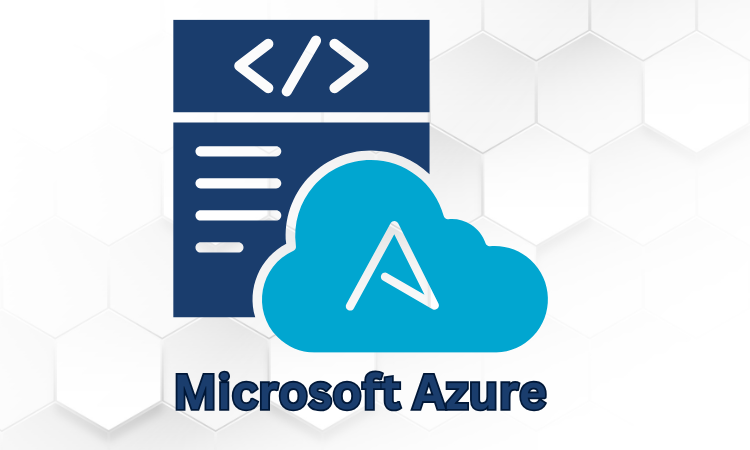Microsoft Azure has revolutionized the way developers build and manage web applications.
As one of the leading cloud platforms, Azure offers a rich set of tools and services tailored for web development.
From hosting scalable websites to integrating advanced AI features, Azure simplifies complex workflows and ensures high availability.
It supports multiple programming languages and frameworks, making it versatile for developers with diverse needs.
Practical Guide to Azure for Web Development
Azure is a cloud platform that offers a range of services for web development, from hosting simple blogs to complex enterprise applications.
It provides high levels of security and performance, making it a reliable choice for developers. With Azure, you can scale your web solutions as your needs grow, ensuring they perform well even under high traffic.
In addition to web development, Azure also supports mobile apps for business, enabling you to create and manage applications for smartphones and tablets.
Whether you are working on a website or a mobile application, Azure’s flexibility and powerful tools allow you to develop and deploy solutions quickly and securely.
What is Microsoft Azure?
Microsoft Azure is a cloud platform that provides a wide range of services to help businesses and developers build, deploy, and manage applications.
It offers tools for hosting websites, storing data, running servers, and more—all through the internet.
With Azure, you don’t need to manage physical hardware or servers, as everything runs in Microsoft’s secure data centers worldwide.
Azure supports many programming languages and frameworks, making it flexible for web development. It’s widely used because it’s scalable, reliable, and integrates well with other Microsoft tools.
Core Azure Services for Web Development
Azure offers powerful services to help developers create, host, and manage web applications.
Azure App Service
Azure App Service is a fully managed platform that allows you to build web applications quickly.
It supports multiple programming languages, including .NET, Java, Python, Node.js, PHP and Ruby making it flexible for developers. With features like automatic scaling and built-in SSL, it ensures reliable performance and secure connections.
Azure App Service is ideal for hosting websites, APIs, and mobile backends, offering a streamlined way to bring your applications to life.
Azure Functions
Azure Functions is a serverless computing service that enables you to execute small pieces of code, known as “functions,” in response to specific events or triggers.
It eliminates the need to manage servers that automatically scale based on demand.
Ideal for lightweight tasks like processing data, handling API requests, or integrating systems, Azure Functions helps developers build efficient, event-driven applications while reducing infrastructure complexity and costs.
Azure SQL Database
Azure SQL Database is a fully managed relational database service designed for web and cloud applications.
It provides high performance, scalability, and built-in features like automated backups, patching, and updates.
With support for SQL, it integrates seamlessly with Azure services and tools. Azure SQL Database is ideal for storing and managing structured data, ensuring reliability and security while reducing administrative overhead.
Azure DevOps
Azure DevOps is a set of tools for managing the entire development lifecycle. It supports continuous integration and delivery (CI/CD) to automate app deployment.
With services like Azure Repos for version control and Azure Pipelines for automating builds, it streamlines collaboration and development processes for teams, making project management and deployment more efficient.
Azure Networking for Web Development
Azure Networking provides a range of services to manage and secure web applications.
Azure Virtual Network (VNet)
Azure Virtual Network (VNet) enables you to create a secure, isolated network within Azure.
It allows you to connect virtual machines, web apps, and other resources, ensuring full control over IP addresses, routing, and security.
VNet ensures private communication between your Azure resources and integrates with on-premises networks, offering flexibility and enhanced security for your web applications and services.
Azure Application Gateway
Azure Application Gateway is a managed load balancer that helps distribute web traffic across multiple servers.
It supports features like SSL termination, URL-based routing, and web application firewall (WAF) protection.
This service enhances application availability, security, and performance by ensuring efficient traffic management and protecting against threats.
It’s ideal for scalable web applications that require secure and optimized traffic handling.
Azure Traffic Manager
Azure Traffic Manager is a global traffic distribution service that improves the performance and availability of web applications.
It uses DNS to route user requests to the closest available endpoint, based on factors like geographic location or performance.
This helps reduce latency and ensures high availability by automatically directing traffic away from unhealthy endpoints, making it ideal for applications with a global user base.
Azure Front Door
Azure Front Door is a service designed to enhance content delivery and speed up applications on a global scale.
It optimizes web traffic by routing it to the nearest available backend, improving performance and reducing latency.
With features like SSL offloading, load balancing, and security (including Web Application Firewall), it ensures high availability and fast delivery of web applications across regions.
It’s ideal for businesses that need a global reach and reliable performance.
Azure DNS
Azure DNS is a hosting service for DNS domains, providing high-performance, reliable DNS resolution.
It allows you to manage domain names and route traffic to your Azure resources using custom domain names.
Integration into Azure offers seamless DNS management, automatic scaling, and high availability.
Azure DNS ensures that users can quickly and reliably access your web applications and services.
Azure Storage for Web Development
Azure Storage provides scalable, secure, and durable solutions for storing web app data.
Azure Blob Storage
Azure Blob Storage is a scalable service for storing unstructured data such as images, videos and documents.
It allows easy management of large amounts of data with high availability and durability. Blob Storage is ideal for web applications that need to store and serve media files or backup data.
Azure File Storage
Azure File Storage provides fully managed file shares that can be accessed via the SMB protocol allowing you to store and share files across multiple virtual machines and applications.
It supports seamless integration with Azure services and on-premises environments, making it ideal for legacy applications that require shared file systems.
With features like automatic scaling, high availability, and data redundancy, Azure File Storage offers a secure and cost-effective solution for managing file-based data in web development projects.
Azure Disk Storage
Azure Disk Storage provides high-performance, durable block-level storage for virtual machines (VMs).
It supports both standard and premium disks, offering flexibility for different workloads. With options for data redundancy and encryption, it ensures reliability and security.
Azure Disk Storage is ideal for web applications that require fast and persistent storage for operating systems, databases, and application data.
Azure Table Storage
Azure Table Storage is a NoSQL key-value store designed for storing large amounts of structured, non-relational data.
It provides fast and scalable storage with a flexible schema, ideal for applications that need to store data like logs, metadata, or user preferences.
Azure Table Storage is cost-effective and supports high availability, making it suitable for web apps with rapidly growing data needs.
Pricing and Cost Considerations
Azure offers a flexible pricing model where businesses pay only for the resources they use.
However, it’s important to consider factors like data storage, bandwidth, and compute power as costs can quickly add up.
Free Tier and Trials:
Azure offers a Free Tier that provides limited access to popular services like Azure App Service, Azure Functions, and Azure Storage.
New users can also take advantage of the Azure free account, which includes $200 in credits for the first 30 days and 12 months of free services.
This allows developers to explore and test Azure services without upfront costs, making it ideal for small projects and learning.
Cost Estimation Tools:
Azure provides several tools to help estimate and manage costs. The Azure Pricing Calculator allows you to estimate the cost of services based on usage and region.
It lets you select different services, adjust configurations, and see the expected monthly costs.
Azure Cost Management + Billing helps track usage, set up a budget, and monitor spending, giving you greater control over your cloud expenses and helping prevent unexpected charges.
Networking Costs:
Networking costs in Azure are primarily based on data transfer, which includes both inbound and outbound traffic.
Outbound data (traffic leaving Azure data centers) is generally charged, while inbound data (incoming traffic) is typically free.
Costs also arise from using services like Azure Traffic Manager, Application Gateway, and VPN Gateway for routing and load balancing.
Efficiently managing traffic and using features like Content Delivery Network (CDN) can help minimize networking costs.
Storage Costs:
Azure storage costs depend on the type of storage service you use and the data redundancy level.
Blob Storage offers different pricing tiers (Hot, Cool, and Archive), with costs varying based on how frequently data is accessed.
Disk Storage and File Storage are priced based on the disk type (Standard or Premium) and size.
Additionally, data transfer, backups, and access frequencies can impact costs. Choosing the right storage tier and redundancy level can help optimize pricing based on your needs.
Tips for optimizing Azure costs
Tips for optimizing Azure costs include:
Use Reserved Instances: Commit to long-term usage for services like Virtual Machines to get significant discounts.
Enable Auto-scaling: Automatically adjust resources based on demand to avoid over-provisioning.
Choose the Right Storage Tier: Use lower-cost tiers like Cool or Archive for infrequently accessed data.
Monitor and Set Budgets: Use Azure Cost Management to track usage and set spending alerts.
Delete Unused Resources: Regularly review and remove unused services to reduce unnecessary charges.
Setting Up a Web Development Environment on Azure
To set up a web development environment on Azure, start by creating an Azure account and using Azure App Service for hosting your web app.
Choose a storage solution like Azure Blob Storage or Azure SQL Database based on your data needs.
Configure Azure Virtual Network (VNet) for secure connections and use Azure DevOps for automated deployments.
Monitor app performance with Azure Monitor and Application Insights. With these tools, you can efficiently build and manage web applications, ensuring scalability, security, and optimal performance.
Benefits of Using Azure for Web Development
Azure offers several advantages for web development, making it a popular choice for developers:
Scalability: Azure allows you to scale your applications easily to handle increasing traffic.
With services like Azure App Service and Azure Functions, resources automatically adjust to meet demand, ensuring your app performs well during traffic spikes.
Cost Efficiency: Azure’s pay-as-you-go pricing helps you manage costs by only paying for the resources you use. The Free Tier and cost optimization tools further reduce expenses for smaller projects.
Security: Azure provides robust security features such as Azure Active Directory, encryption, and compliance with global standards, ensuring your web apps are protected.
Global Reach: With Azure CDN and Azure Front Door, your applications can be delivered globally with low latency and high availability.
Integration: Azure seamlessly integrates with popular tools like Visual Studio, GitHub, and Azure DevOps, enhancing productivity and simplifying deployment.
Reliability: Azure’s data centers are spread across multiple regions offering high uptime backups and disaster recovery solutions, ensuring your app is always available.
These features make Azure a powerful platform for building secure, scalable, and cost-efficient web applications.
Common Use Cases for Azure in Web Development
Azure’s flexibility and array of services make it an ideal platform for a wide range of web development projects.
E-commerce Websites:
Azure provides the scalability and security needed for high-traffic ecommerce platforms, allowing businesses to handle fluctuating demand and securely process transactions.
Content Management Systems (CMS):
With Azure’s storage and compute capabilities, developers can build and deploy scalable CMS solutions that manage large volumes of content and media.
Real-Time Applications:
Azure supports real-time apps, such as chat applications or live dashboards, with services like Azure SignalR for real-time communication and Azure Functions for serverless event-driven actions.
Progressive Web Apps (PWAs):
Azure helps build and deploy PWAs by offering reliable cloud infrastructure, fast content delivery via Azure CDN, and storage options to handle app data and offline functionality.
API Hosting:
Azure offers secure, scalable hosting for APIs, allowing developers to create RESTful APIs and integrate them into web applications with ease, leveraging tools like Azure API Management.
Data-Driven Applications:
Azure services like Azure SQL Database and Azure Cosmos DB are perfect for web apps requiring reliable, low-latency data access, especially for large-scale data-driven applications.
Challenges of Using Azure for Web Development
While Azure offers numerous benefits, it also comes with some challenges. First, its pricing structure can be complex, making it difficult for beginners to estimate costs accurately.
The wide range of services and configurations might overwhelm developers, especially those new to the platform.
Additionally, managing and monitoring resources can be time-consuming without the right tools in place.
Performance optimization and ensuring efficient scaling can also be tricky without careful planning.
Lastly, integration with third-party services may sometimes require additional configuration, leading to potential compatibility issues.
Best Practices for Web Development on Azure
Best Practices for Web Development on Azure include:
Networking
Set up Firewalls and Network Security Groups (NSGs): Ensure your web applications are protected from unauthorized access by configuring Azure Firewall and NSGs to control inbound and outbound traffic. This enhances security and minimizes exposure to threats.
Optimize Routing with Azure Traffic Manager: Use Azure Traffic Manager to direct traffic based on the user’s location or other factors, ensuring better performance and availability across different regions.
It helps reduce latency and improves the overall user experience by routing requests to the nearest or healthiest endpoint.
Storage
Leverage Lifecycle Management to Reduce Storage Costs: Set up Azure Blob Storage Lifecycle Management to automatically move older or less frequently accessed data to lower-cost storage tiers like Cool or Archive.
This helps reduce storage costs while still keeping data accessible when needed.
Enable Encryption and Backups for Sensitive Data: Ensure that sensitive data is encrypted at rest and in transit using Azure Storage Encryption and Azure Key Vault.
Regularly back up your data using Azure Backup services to protect against accidental loss and minimize downtime.
Cost Management
Use Azure Cost Management + Billing for Detailed Cost Insights: Utilize Azure Cost Management + Billing to track and analyze your cloud spending.
Set budgets and alerts to monitor and control costs effectively, preventing overspending.
Implement Auto-scaling and Reserved Instances to Save Money: Enable auto-scaling for resources like Virtual Machines and App Services to adjust your infrastructure based on demand, avoiding unnecessary costs during low-traffic periods.
Additionally, commit to Reserved Instances for a longer-term discount on certain services.
Monitor Performance Using Azure Monitor and Application Insights: Leverage Azure Monitor to track performance metrics and set up alerts for any issues that could impact your app’s performance.
Application Insights can provide deeper insights into app behavior, allowing you to identify bottlenecks, optimize performance, and ensure smooth user experiences.
Security
Secure Applications with Azure Active Directory (Azure AD): Protect your web applications with Azure AD for identity management and authentication.
Use multi-factor authentication (MFA) and implement role-based access control (RBAC) to ensure that only authorized users have access to sensitive resources.
With these best practices, developers can build highly secure, cost-effective, and efficient web applications on Azure while optimizing performance and ensuring smooth user experiences.
How Brandout Adv Can Help You Build a Website with Azure?
Brandout Adv offers expert web development services using Microsoft Azure’s powerful cloud infrastructure to create scalable, secure, and high-performance websites.
We leverage Azure App Service for hosting, Azure SQL Database for data management, and Azure DevOps for seamless deployment.
Our tailored approach ensures cost optimization, enhanced security, and reliable digital solutions for businesses of all sizes.
Summary:
Azure empowers developers with a robust platform to build and scale web applications efficiently.
Its vast array of services, such as App development Service, Azure Functions, and storage solutions, caters to diverse development nòeeds while ensuring flexibility and reliability.
While challenges like cost estimation and complexity exist, they can be addressed through best practices and proper planning.
Azure remains a powerful ally for developers, driving innovation and enabling seamless web development in the cloud.
Frequently asked questions:
What is Azure in web development?
Azure is a cloud platform by Microsoft that provides tools and services for building and scaling web applications.
It supports multiple programming languages, and frameworks and offers features like App Service, databases, and global content delivery.
What is the work of an Azure developer?
An Azure developer builds and manages cloud-based applications using Azure services.
They work with tools like Azure for modern development, Functions, and DevOps to create scalable and secure applications.
What is the meaning of Azure in programming?
In programming, Azure refers to Microsoft’s cloud platform offering tools for development, storage, networking and analytics, enabling developers to build and deploy applications in the cloud.
How do Azure students work?
Students learning Azure use free resources like the Azure Free Tier, trials, and educational tools to build apps, explore cloud concepts, and gain hands-on experience with various Azure services.











